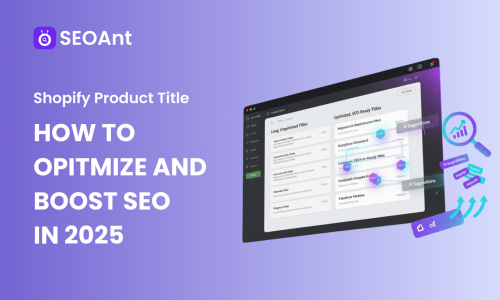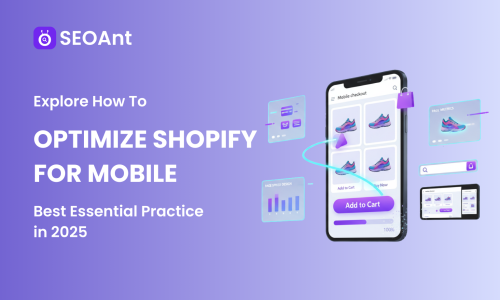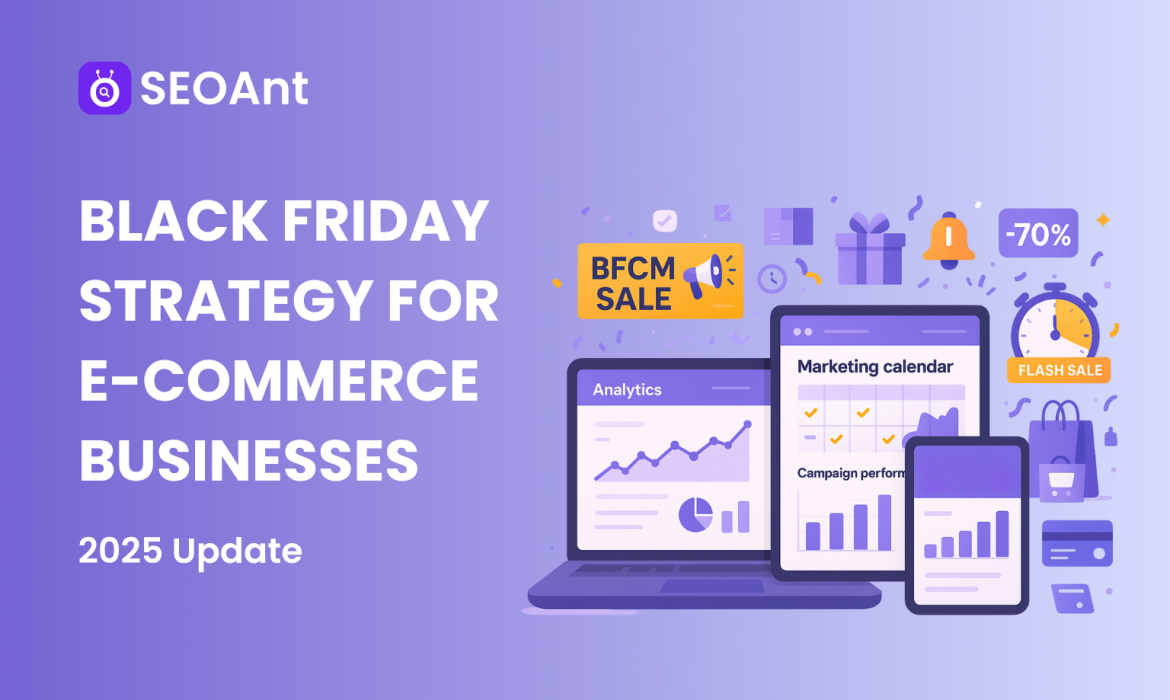
Black Friday 2025 is the biggest revenue opportunity of the year for e-commerce businesses with online sales expected to rise to new highs, once again despite economic headwinds. While Salesforce has a more measured forecast of$288 billion in U.S. online holiday sales, with a relatively modest 2.0% increase, skilled e-commerce entrepreneurs know that with a sound Black Friday plan, they’ll be able to capture an advantage over competitors who are unwilling to change with the times and customer shopping patterns.
This guide will give beginning e-commerce store owners recommendations and actionable ideas, proven strategies for implementing these recommendations to achieve the best results of 2025 Black Friday Strategy. No idea is off limits from using AI for understanding personalized customer experiences, using online chat for crisis management, to ideas about how to create valuable Black Friday campaigns.
Table of Contents
Understanding the 2025 Black Friday Landscape
The Black Friday landscape for 2025 has changed noticeably, as mobile commerce is now leading, with about 70% of all online purchases being made using a mobile device. The mobile-first trend requires the pages and websites featuring products to have responsive features and for the pages to load quickly in order to capture the attention of smartphone shoppers. In addition, more than half of consumers (54%) now start shopping at least one week before Black Friday, which will benefit brands that launch promotions ahead of time. As communities embrace artificial intelligence (AI) into business operations, e-commerce continues on a path of personalization, as AI chatbots increase conversions by 9%, along with creating a personalized experience.
Building Your Comprehensive 2025 Black Friday Strategy
Essential Components of a Winning 2025 Black Friday Strategy
To develop a strong 2025 Black Friday strategy, you have to start planning early and with a solid foundation. Top e-commerce retailers start their preparations at least three months in advance to optimize their website, organize inventory, and develop marketing campaigns—this will hedge your risk of overloading your system during peak traffic times.
More generally, a solid budget plan that typically utilizes 15–20% of your marketing budget would include things like paid advertising, email, social media, or influencer marketing. After that, it’s time to set some objectives. Setting measurable goals will help you make decisions and track performance, whether that’s setting a revenue goal, asking for an increase in purchases for the season, or simply conversion improvements throughout the season.
Market research and competitor analysis is critical to establishing differentiation in the marketplace. Competitor research should include studying the competition’s pricing strategy, promotional timing, and customer enrollment; this will unlock the secret to identifying ideal discount levels for promotions and the ideal messaging to use with customers. Technical hardware and software are very important to ensuring that your site remains stable. Try to have charge load speed under three seconds at least, and ensure that your site is usable on mobile devices. Use a CDN and optimized images as well, if possible; and use the CDN to help manage performance and customer experience during periods of high site traffic.
Advanced Market Research and Competitive Intelligence
Deep Competitor Analysis Practices
Using advanced competitive intelligence is not the same as simply doing price checks to understand your competing business’ strategies, strengths, and weaknesses. A comprehensive competitor analysis looks at price patterns during the year in order to leverage those patterns into predictive discount strategies for Black Friday. It looks at how your competitors have evolved their unique marketing message to uncover any first-move advantages for your own market position. Charts used for customer reviews also show relevant sentiment for your competitors’ competitive advantages, in addition to uncovering weaknesses in the consumer experience.
Tools such as SEMrush, Ahrefs, and SimilarWeb provide insights into traffic patterns, keyword strategy, and advertising budget for your competitors. Social media monitoring platforms also follow engagement rates, which content is performing or not, and general customer sentiment across the social channels for the categories they compete. Email subscription services demonstrate competitor promotion timing, discount strategy, and timing of messaging during Black Friday.
Finally, Mystery shopping provides direct insights into your competitor’s customer experience. Understand how their placement of strengths and weaknesses plays into their given customer journey, checkout process, and customer service level will give your business competitive intelligence for strategic pricing, positioning, and service opportunity differentiation to secure direct market share from other competitors during the Black Friday competition.
Customer Behavior Pattern Analysis
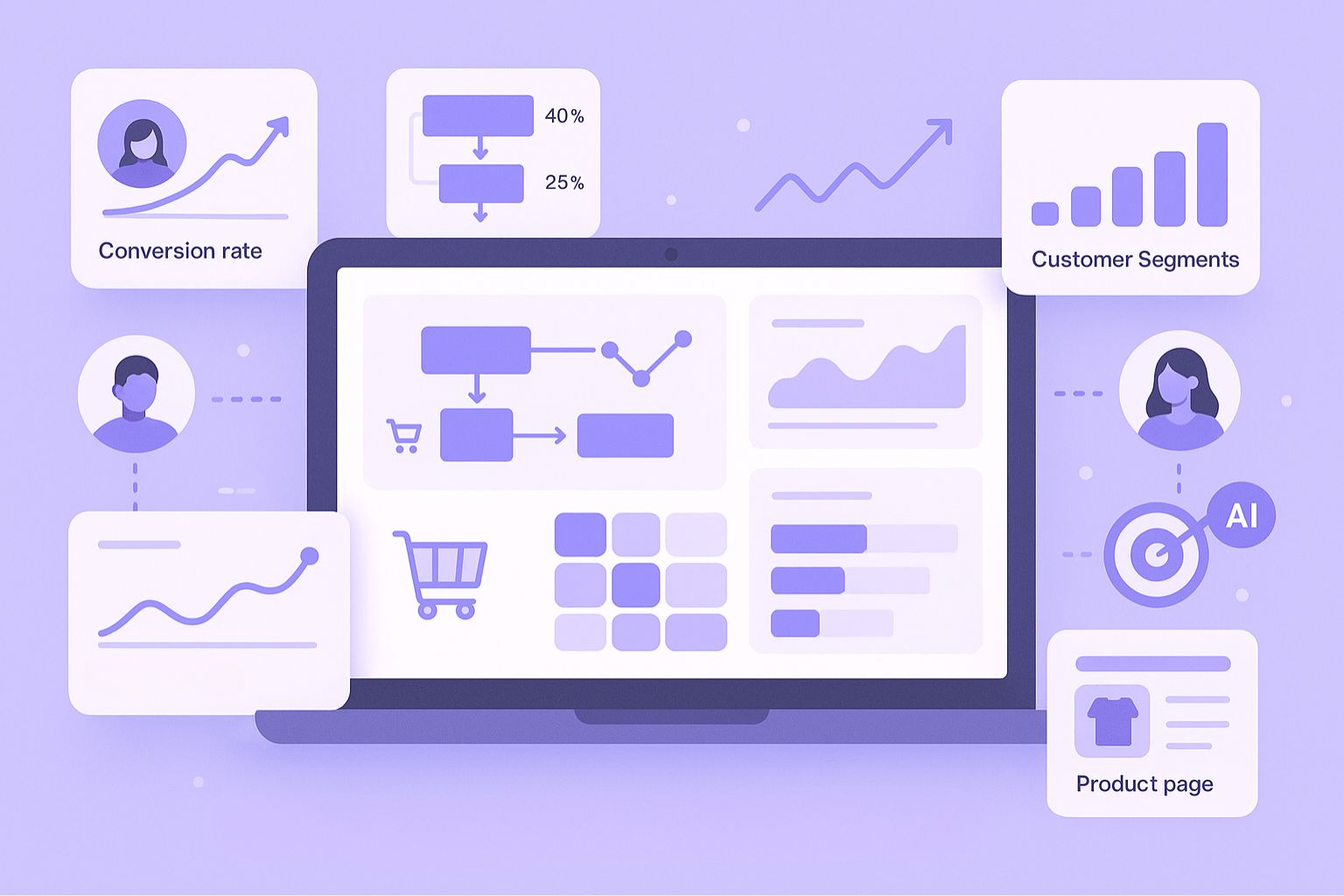
When we examine customer behavioral patterns, we can implement accurate targeting and personalization strategies to drive conversion rates and average order values (AOV). Advanced analytics platforms provide full customer journey mapping from the point of awareness all the way through to post-purchase behaviors, identifying critical decision points and places for friction that hinder conversion.
Cohort analysis highlights how customer behavior varies both between groups and across promotional periods, providing insight into targeted messaging and timely offers. Analysis of purchase timing can identify ideal promotional periods while also predicting the group demand pattern for the purposes of inventory planning. Recognizing habitual cross-sell and upsell patterns can inform bundling strategies and recommendation engine enhancement.
Tools such as heat mapping and user session recording offer a visual representation of customer behavior on product pages, through the checkout process, and by examining promotional landing pages. These tools allow for optimizing customer experience, while decreasing the abandonment rate during peak times.
Market Trend Forecasting and Opportunity Identification
Trend predictions combine the review of historical information with current data trends to proactively anticipate new possibilities and potential threats. The observation of social media trends for products helps identify new product categories, new consumer preferences, and creating opportunities for viral marketing which would all drive potential housing performance for Black Friday.
Reviewing Google Trends for relevant search terms helps determine search volume patterns for relevant keywords to inform the timing of content creation and advertising to maximize impression potential. Reviewing industry reports published by firms such as McKinsey, Deloitte, and Forrester will provide macro-economic context and future consumer behaviors which will aid strategic planning decisions.
Critical Pre-Launch Preparation Strategies
Website Performance and Technical Optimization
Optimizing website performance has quickly placed itself at the top of everyone’s priority list to get ready for Black Friday. The foundation of technical readiness is load testing, which means intentionally replicating traffic to the site under Black Friday conditions and finding ways to resolve bottlenecks before real customers are impacted. Beyond load testing the site’s busiest sections, it will be wise to stress test payment processing systems, shopping carts, and checkout processes to help ensure successful/streamlined payment and cart functionality during peaks.
Alongside performance optimization, another aspect of optimization for Black Friday is mobile optimization, which should involve more than just keeping a responsively designed site that auto-sizes images and graphics. There is a movement toward touch-friendly navigation and checkout processes, as well as one-click purchasing and advanced digital wallets. Considering mobile devices are projected to produce the most traffic on Black Friday, optimizing for mobile customers’ experience will undoubtedly affect conversion rates and overall success of the campaign. One consideration made specifically toward mobile optimization is optimizing page speed as it will bring into consideration things like compressed images, minimized code, and server response.
Inventory Management and Product Strategy
Effective inventory management for Black Friday requires sophisticated demand forecasting based on historical sales data, market trends, and promotional intensity. Successful e-commerce businesses analyze previous years’ performance data to identify top-selling products, peak traffic times, and customer purchasing patterns. This analysis informs inventory allocation decisions and helps prevent stockouts of high-demand items while avoiding overstock of slower-moving products.
Product selection and pricing strategies should focus on high-margin items that can sustain promotional discounts while maintaining profitability. Creating product bundles that combine popular items with slower-moving inventory can increase average order values while clearing excess stock. Competitive pricing analysis ensures that promotional prices remain attractive compared to competitors while preserving profit margins. Dynamic pricing capabilities allow real-time adjustments based on demand, inventory levels, and competitive positioning.
Safety stock calculations become crucial during Black Friday preparation, as stockouts during peak demand periods can result in significant lost revenue and customer disappointment. Implementing inventory tracking systems that provide real-time visibility into stock levels enables proactive management and prevents overselling. Coordination with suppliers and logistics partners ensures adequate inventory replenishment capabilities and shipping capacity to handle increased order volumes.
Creating Compelling 2025 Black Friday Strategy for Marketing
Multi-Channel Marketing Approach
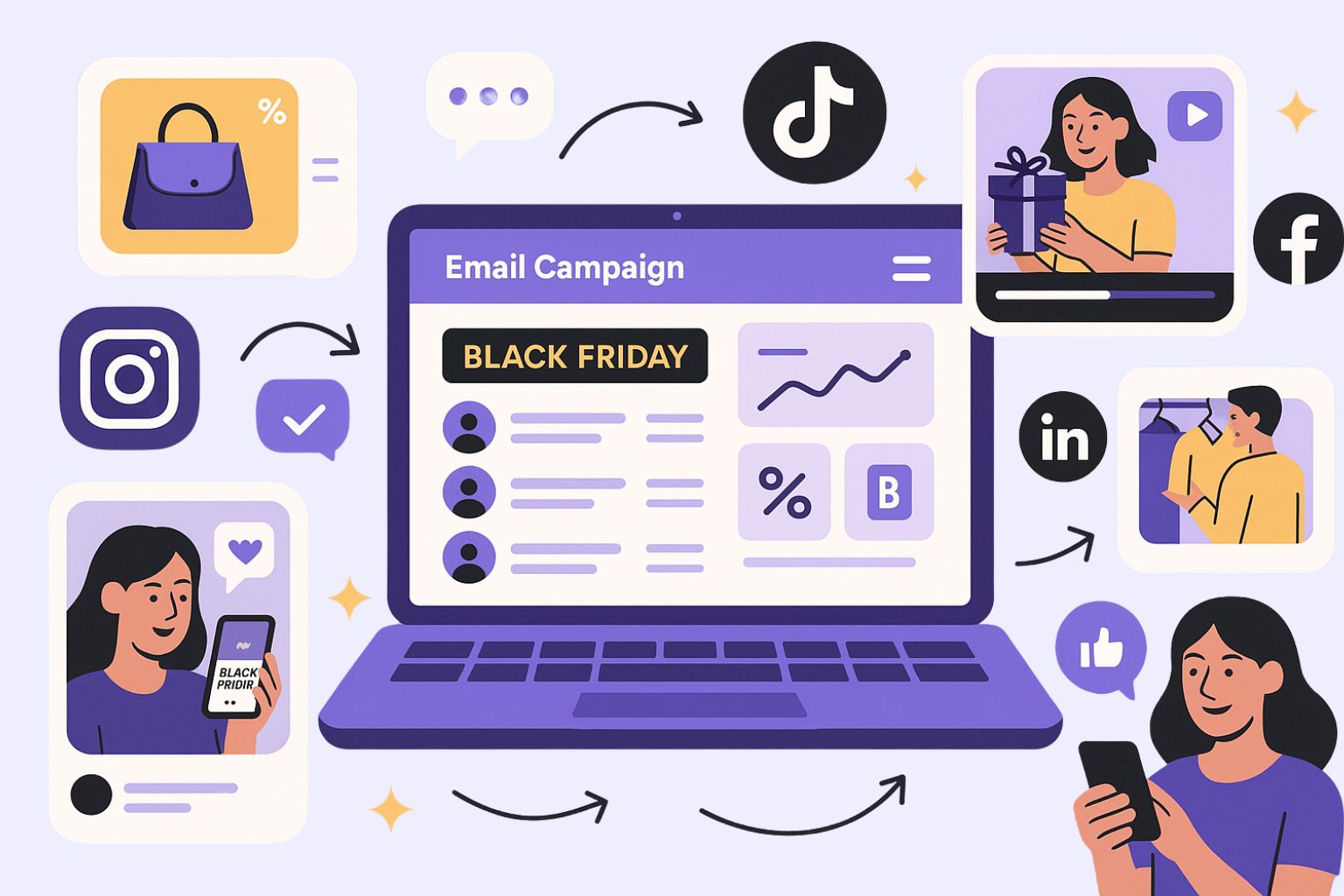
Effective Black Friday email marketing starts with a plan that segments the email audience based on customer engagement, purchase history, and behavior. Messaging can then be highly personalized based on these different segments of customers—in other words, creating an email sequence that’s relevant to loyal customers, recent purchasers, and inactive subscribers. Automated email sequences may include teaser emails leading up to Black Friday, early access emails for VIP customers, and post-purchase follow-up emails to send repeat purchases and encourage a return visit.
Using A/B tests to test email subject lines, times of day email is sent, and promotional offers will allow for data-driven decision-making throughout the campaign period. A/B testing will include testing various discount levels, messaging approaches, and visual designs to determine what combination of items will provide the highest results for email opens and clicks and ultimately conversions. Another crucial aspect of email marketing is automation and successful automation workflows will include an abandoned cart recovery sequence, a browse abandonment sequence, and a sequence for upselling after they have made a purchase to extract the highest amount of revenue from each subscriber.
Creating and implementing a social media strategy will require a content plan for each platform with content suitable to each platform. Campaigns on Instagram and Facebook should focus on products through images, videos, behind-the-scenes content, and user-generated content, which will foster engagement among the community. LinkedIn campaigns may target the business-to-business customers of your brand by promoting professional product messaging and offers focused on a particular industry. Campaigns on TikTok and Youtube should combine advertisement and experience by creating content through video, providing opportunities to showcase products in action and develop moments which create shareability.
AI-Powered Personalization Tactics
Customer behavior analysis using artificial intelligence enables a comprehensive understanding of shopping habits, browsing behavior, and the best timing for purchasing decisions. Machine learning enables brands to determine the right potential customers to target and the best products to target by category and price range, which enables a business to serve the customer better offers when they are most likely to purchase.
Dynamic content technologies vary the message of what is offered on brand websites in real-time to each individual visitor based on their behavior, increasing customer engagement, and average order value by presenting products that are more relevant to the shopper. Predictive recommendation engines use historical and seasonal data to recommend the “best” products a customer is likely to purchase, enhancing the shopping experience from the homepage through checkout while leading to higher conversions and repeat purchases.
Advanced Promotional Strategies
Scarcity and Urgency Marketing
Scarcity marketing stimulates urgency by leveraging psychological triggers to make consumers purchase right away. The use of limited time offers and countdown timers stimulate fear of missing out (FOMO) while messaging like “Only a few left” increases perceived value, and triggers immediate purchasing behavior.
The addition of social proof (live purchase notifications, customer reviews, and visitor counters) establishes trust and motivates conversions. Creating a wait list for out-of-stock products keeps consumers engaged and waiting for the opportunity to purchase. Flash sales, progressive discounts, and exclusive deals further elevate the excitement through the entirety of the Black Friday weekend while building loyalty.
Cross-Selling and Upselling Optimization
Using strategic product bundling raises average order values and offers true customer value by offering products that complement each other. Bundle creation approaches based on the data analyze purchase patterns to show the types of items frequently bought together, to then promote attractive package deals. Seasonal bundles capture holiday gift giving trends and provide easy shopping ideas at the holidays.
Upselling techniques provide premium product alternatives at thoughtful times along the customer journey. Product comparison tools validate differences in features and highlight established perceived value of higher-tier product offerings. Limited time upgrade promotions drive additional urgency for customers to make purchases despite the added time of exploring the existing premium offering.
Cross-sells are also frequently included along the shopping experience, from product pages to checkout. AI-enabled recommendations analyze customer behaviors and purchase history to suggest relevant complements. The opportunity for cross-sell with greater revenue potential continues with post-purchase through emails and retargeting ads.
Technology Stack and Infrastructure Optimization
| Category | Key Focus Areas | Best Practices & Optimization Tips |
| E-commerce Platform Selection & Configuration | – Scalability & performance – Security & integration – Traffic management | – Choose platforms like Shopify Plus, Magento Commerce, or BigCommerce Enterprise for high-volume sales – Enable compression, caching, and optimized database queries – Use CDNs and load balancing for faster, more stable performance – Manage API integrations carefully to avoid system overload |
| Payment Processing & Security Enhancement | – Multiple payment options – Checkout optimization – Fraud & data protection | – Offer diverse methods: credit cards, Apple Pay, Google Pay, BNPL – Ensure SSL certificates, PCI compliance, and fraud detection systems – Set up backup gateways and perform load testing for payment reliability |
| Customer Service Technology Integration | – Omnichannel support systems – AI chatbot assistance – Service performance analytics | – Integrate live chat, email, social media & phone channels – Deploy AI chatbots for routine queries, escalate complex cases to agents – Build robust FAQs, video guides, and self-service knowledge base – Track response & resolution rates, automate escalation for urgent issues |
International Expansion and Global Considerations
Cultural Adaptation and Localization
Cultural sensitivity in marketing ensures that global campaigns are relevant and authentic to local audiences. Local color associations, holidays, and cultural norms vary – red may be lucky in China, while signifying danger in Western markets – to adapt campaigns, promotions, or the timing of the campaigns or promotions.
Language localization is even more complex than just translating a campaign; it also involves using local jargon or calls of action, imagery, or tone. Using a local influencer can add credibility and make a campaign culturally relevant. It is equally important to manage time zones. Make campaign launches staggered, time social posts to coincide with peak local hours, and provide 24/7 customer support to help create a seamless brand experience for the consumer, no matter where they are in the world
International Logistics and Fulfillment
Global fulfillment strategies assess possible cost efficiency trade-offs against delivery speed expectations from market to market. Having regional distribution centers can help reduce shipping times and costs, and they also allow for agile inventory management of the most popular products in certain markets. Utilizing a third-party logistics provider can provide expertise about international shipping regulations, customs clearance, etc.
Cross border shipping can be optimized through careful selection of carriers, management of customs documentation, and providing delivery process scheduling estimates to customers. Duty and tax calculation tools inform customers about total costs ahead of checkout, which helps to reduce cart abandonment rates and require customer service inquiries. Return and exchange policies must consider the costs of return and exchange shipping from international markets, and the time it may take to receive or recoup your purchase.
Maximizing Long-Term Value Beyond Black Friday
| Category | Key Focus | Tactics & Best Practices |
| Customer Retention & Relationship Building | Turning one-time buyers into loyal customers | – Send thank-you messages with product care info & related recommendations – Launch loyalty enrollment campaigns offering exclusive rewards & early sale access – Collect feedback via email surveys and review prompts to improve products & relationships |
| Advanced CLV Optimization | Increasing customer lifetime value | – Use segmentation analysis to identify high-value customers – Enhance loyalty programs with tiers, personalized rewards & gamification – Implement cross-sell & upsell offers via email automation & retargeting |
| Subscription & Recurring Revenue | Building predictable, long-term revenue streams | – Create subscription bundles with flexible plans & exclusive benefits – Develop membership programs with special pricing & community access – Reduce churn using pause options, plan adjustments, and win-back campaigns |
Conclusion
To fully command your 2025 Black Friday Strategy, you will need to blend old-school retail principles with what you’ve learned about online shopping technology and consumer behavior. The detailed approach in this guide covers every important element of a Black Friday plan, from research and analysis at the outset to optimization and planning for the next season after the sale. Success will be found in thorough preplanning, strategic deployment of plans in real time, and continued optimization of plans based on data and consumer feedback after Black Friday.
Black Friday, which has evolved from the one-day shopping challenge to a multi-week holiday shopping season, involves deliberate and thoughtful approaches to mobile-first consumer behavior, leveraging AI-generated personalization experiences, and planning for targeting new international markets. Successful e-commerce businesses recognize that Black Friday is not necessarily about earning top-line revenues, but about a new customer acquisition opportunity, reinforcement of brand loyalty, and the continuation of market share for a full year after the sale.









